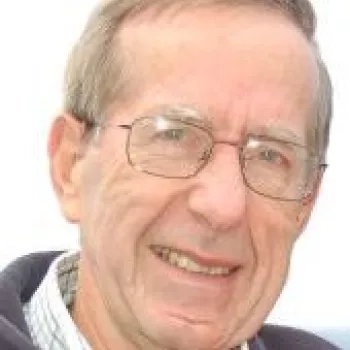
Artefactos en preparaciones histológicas y citológicas



En términos histológicos y citológicos, un artefacto se puede definir como una estructura que normalmente no está presente en el tejido vivo. En algunas situaciones, la presencia de artefactos puede poner en riesgo la precisión del diagnóstico.
El objetivo de esta publicación es promover la concienciación sobre los distintos artefactos que pueden encontrarse en histopatología, ofrecer una guía para su reconocimiento, explicar sus causas y sugerir, siempre que sea posible, los medios mediante los cuales puede evitarse su existencia.
Más información sobre:
- Artefactos de prefijación
- Artefactos de fijación
- Artefactos de procesamiento de tejido
- Artefactos de microtomía y montaje de cortes
- Artefactos de tinción
- Artefactos de conservación de cortes
- Artefactos en cortes congelados
- Artefactos en huesos y tejidos calcificados
- Artefactos en cortes de resina
- Histoquímica, inmunohistoquímica e histoquímica de hibridación
- Artefactos varios
- Artefactos en preparaciones citológicas
- Artefactos comunes
¡Descargue ahora el PDF Artifacts in Histological and Cytological Preparations!
About the presenters

Geoffrey Rolls is a Histology Consultant with decades of experience in the field. He is a former Senior Lecturer in histopathology in the Department of Laboratory Medicine, RMIT University in Melbourne, Australia.

Neville J Farmer is a former Manager of Anatomical Pathology at Dorevitch Pathology in Victoria, Australia.

John B Hall is a retired Senior Scientist in the Anatomical Pathology Unit, Alfred Hospital in Victoria, Australia.
Referencias
- Wallington EA: Artifacts in tissue sections. Med Lab Sci 1979, 36:3-61
- Thompson SW, Luna LG: An atlas of artifacts. Springfield, Charles C Thomas, 1978
- Davis JR, Steinbronn KK, Graham AR, Dawson BV: Effects of Monsel's solution in uterine cervix. Am J Clin Pathol 1984, 82:332-335
- Schlosshauer PW, Chen W, Chanderdatt D, Antonio LB: Monsel's artifact in gynecologic biopsies: a simple remedy. The Journal of Histotechnology 2005, 28:161-162
- Raife T, Landas SK: Intracellular crystalline material in visceral adipose material: "rediscovery" of a common artifact. The Journal of Histotechnology 1993, 16:69-70
- Kobayashi H, Mahovlic D, Bauer TW: Interpreting and avoiding histologic artifacts in hard-tissue research. The Journal of Histotechnology 2006, 29:223-228
- Lee H, Neville K: Handbook of epoxy resins. New York, McGraw Hill, 1957
- Cook SF, Ezra-Cohn HE: A comparison of methods for decalcifying bone. J Histochem Cytochem 1962, 10:560-563
- Patterson S, Gross J, Webster ADB: DNA probes bind non-specifically to eosinophils during in situ hybridisation but does not inhibit hybridisation to specific nucleotide sequences. J Virol Methods 1989, 23:105-109
- Luna LG: Questions in search of an answer (Question 4). HistoLogic 1988:16
- Dayman ME: Response to questions in search of an answer. HistoLogic 1989:56-57
- Grizzle WE: The effect of tissue processing variables other than fixation on histochemical staining and immunohistochemical detection of antigens. The Journal of Histotechnology 2001, 24:213-219
- Wynnchuk M: An artifact of H&E staining: The problem and its solution. The Journal of Histotechnology 1990, 13:193-198
- Drury RAB, Wallington EA: Carleton's histological technique. Oxford, Oxford University Press, 1980
- Faolain EO, Hunter MB, Byrne JM, Kelehan P, Lambkin HA, Byrne HJ, Lyng FM: Raman spectroscopic evaluation of efficacy of current paraffin wax section dewaxing agents. Journal of Histochemistry and Cytochemistry 2005, 53:121-129
- Wied GL, Keebler CM, Koss LG, Patten SF, Rosenthal DL (editors): Compendium of diagnostic cytology. Chicago, Tutorials of Cytology, 1992
El contenido de Leica Biosystems Knowledge Pathway está sujeto a las condiciones de uso del sitio web de Leica Biosystems, disponibles en: Aviso legal.. El contenido, incluidos los webinars o seminarios web, los recursos de formación y los materiales relacionados, está destinado a proporcionar información general sobre temas concretos de interés para los profesionales de la salud y no está destinado a ser, ni debe interpretarse como asesoramiento médico, normativo o jurídico. Los puntos de vista y opiniones expresados en cualquier contenido de terceros reflejan los puntos de vista y opiniones personales de los ponentes/autores y no representan ni reflejan necesariamente los puntos de vista ni opiniones de Leica Biosystems, sus empleados o sus agentes. Cualquier enlace incluido en el contenido que proporcione acceso a recursos o contenido de terceros se proporciona únicamente por comodidad.
Para el uso de cualquier producto, debe consultarse la documentación correspondiente del producto, incluidas las guías de información, los prospectos y los manuales de funcionamiento.
Copyright © 2024 Leica Biosystems division of Leica Microsystems, Inc. and its Leica Biosystems affiliates. All rights reserved. LEICA and the Leica Logo are registered trademarks of Leica Microsystems IR GmbH.